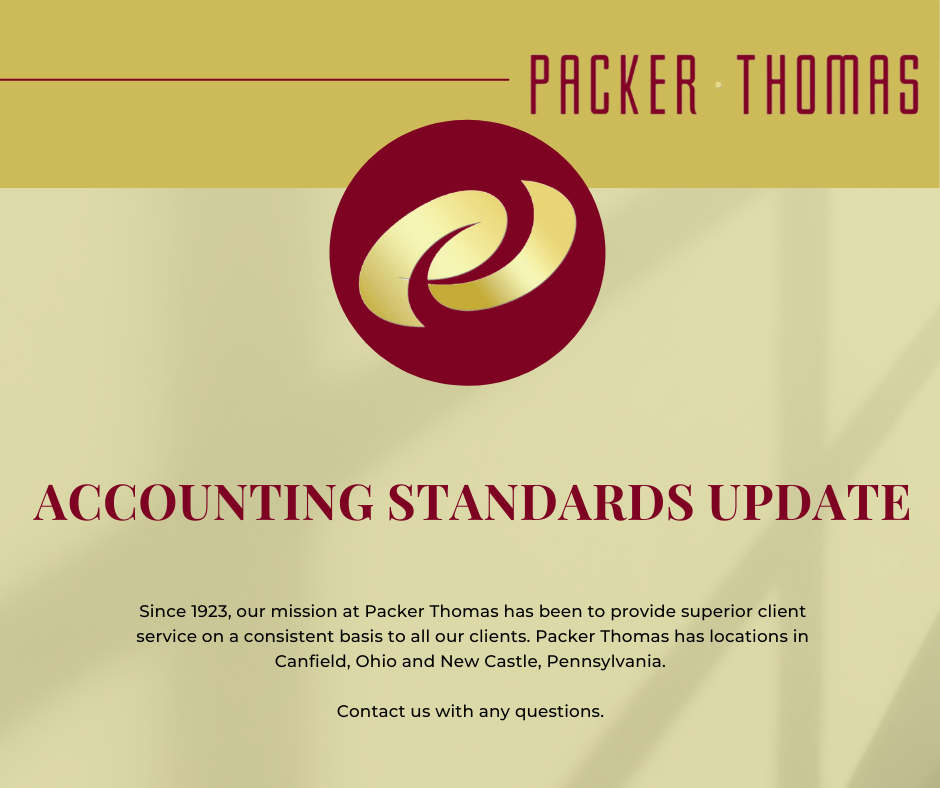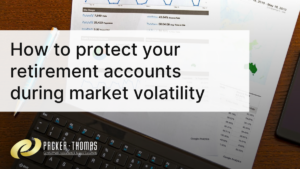NEW LEASE ACCOUTING MODEL (overview of ASU No. 2016‐02)
This memorandum offers an overview of the new guidance on accounting for leases in AccountingStandards Updates (ASU) No. 2016‐02,Leases (Topic 842).
In February 2016, the FASB issued ASU No. 2016‐02,Leases (Topic 842). This ASU supersedes the guidance in Topic 840, Leases, and introduces a new Topic 842, Leases. The new topic primarily addresses the criticisms of existing leasing guidance related to a lessee’s accounting for operating leases. Although lessor accounting is not fundamentally changed as a result of this ASU, some amendments have been made to conform the lessor guidance with the lessee guidance and other areas of GAAP.
An overview of the amendments in ASU No. 2016‐02 is as follows:
Scope
A lease is defined as a contract, or a part of a contract, that conveys the right to control the use of identified property, plant, or equipment (an identified asset) for a period of time in exchange for consideration. In order for a customer to have control, it must have both:
- The right to obtain substantially all of the economic benefits from the use of the asset; and
- The right to direct the use of the
All leases and subleases are within the scope of the guidance in ASU No. 2016‐02, except for the following exclusions:
- Leases of intangible assets;
- Leases for the exploration or use of nonregenerative resources (such as minerals, oil, and natural gas);
- Leases of biological assets;
- Leases of inventory; and
- Leases of assets under
Under the existing guidance in Topic 840, Leases, lessees are required to determine whether a lease is an operating lease or a capital lease. Leasing assets and liabilities are only recognized on the balance sheet of a lessee for a capital lease. Under the new Topic 842, Leases, introduced by ASU No. 2016‐02, the primary determination is whether or not the leasing arrangement satisfies the definition of a lease. All leasing assets and liabilities are recognized on the balance sheet of a lessee, regardless of classification, unless the lessee elects the short‐term lease exemption.
Lessee Accounting
Recognition:
Under Topic 842, a lessee must record the following in its balance sheet, regardless of lease classification:
- A liability for lease payments (referred to as the lease liability); and
- An asset for the right to use the leased asset during the lease term (referred to as the right‐of‐use asset).
Similar to the guidance in Topic 840, a lessee must include the following payments in its measurement of these assets and liabilities:
- Payments during optional periods if the lessee is reasonably certain that it will either:
- Exercise an option to extend the lease; or
- Not exercise an option to terminate the
- Payments to purchase the leased asset if the lessee is reasonably certain that it will exercise its purchase option.
The term “reasonably certain” reflects a high threshold, and is intended to be applied consistent with the term “reasonably assured” in Topic 840. Also consistent with the guidance in Topic 840, a lessee must exclude variable lease payments in its measurement of lease assets and liabilities, unless these payments are dependent upon an index or rate, or are in substance fixed payments. Variable payments dependent upon an index or rate are included in estimated lease payments based on the index or rate at the commencement of the lease, which is a simplification from existing lease accounting guidance.
If a lessee has a lease with a term of 12 months or less, it may make an accounting policy election (by leased asset class) not to recognize lease assets or lease liabilities. This election generally requires the lessee to recognize lease expense on a straight‐line basis over the lease term.
Measurement:
Under Topic 842, an entity must distinguish between a finance lease and an operating lease in order to determine how to recognize the changes in lease assets and liabilities in the income statement. This classification is similar to the distinctions between a capital lease and an operating lease in Topic 840.
Finance Leases
If a lessee has a finance lease, it must measure the right‐of‐use asset and lease liability at the present value of the lease payments in the balance sheet. Interest on the lease liability is recognized separately from the amortization of the right‐of‐use asset in the income statement. The statement of cash flows must also reflect the following classifications for a finance lease:
- Repayments of the principal portion of the lease liability are financing activities;
- Payments of interest on the lease liability are operating activities; and
- Variable lease payments are operating
Operating Leases
If a lessee has an operating lease, it must measure the right‐of‐use asset and lease liability at the present value of the lease payments in the balance sheet. A single lease cost, generally allocated on a straight‐
line basis over the term of the lease, is recognized in the income statement. All cash payments for an operating lease are classified as operating activities in the statement of cash flows.
Private Company Considerations
Topic 842 permits a private company to use risk‐free rates when determining the present value of lease liabilities.
Remeasurement:
Under Topic 842, a lessee is required to remeasure lease payments under the following circumstances:
- A lease modification occurs that is not a separate contract;
- A variable lease payment contingency is resolved (such as an event triggers the conversion of variable lease payments to fixed payments for the remainder of the lease term); and
- A change occurs in any of the following:
- The lease term;
- The reasonable certainty that an option will or will not be exercised; or
- The probable amounts owed under a residual value
Variable lease payments dependent upon an index or rate must be remeasured using the index or rate at the remeasurement date.
Disclosure:
Topic 842, adds comprehensive qualitative and quantitative disclosures for lease arrangements. These disclosure requirements include information about management’s significant judgments in its accounting for a leasing arrangement.
Lessor Accounting
ASU No. 2016‐02 makes minor changes to the accounting for a lessor to conform the lessor guidance with the lessee guidance and other areas of GAAP, as follows:
- Certain glossary terms that are applied by both lessees (as a sublessor) and lessors have been amended so that both parties can apply the same terms; and
- Certain provisions were amended to align the revenue‐generating activities of lessors with the guidance in Topic 606, Revenue from Contracts with Customers.
Previous lessor guidance under Topic 840 was derived from and aligned with the revenue recognition guidance in Topic 605, Revenue Recognition, that preceded the guidance in Topic 606. Consistent with Topic 606, ASU No. 2016‐02 requires a lessor to determine whether a lease is effectively the sale of the underlying asset. This determination hinges on whether the lessee obtains control of the underlying asset as a result of the lease, similar to the transfer of control principle in Topic 606. A lessor may not recognize sales profit or revenue at the beginning of a lease if the lease does not transfer
control of the leased asset to the lessee. ASU No. 2016‐02 does not distinguish between leases of real estate or other assets.
Lease Components
The amended guidance clarifies the requirements for the segregation of lease components from nonlease components in a contract. A lessor must allocate consideration in a contract between the lease and nonlease components on a relative standalone price basis. A lessee must perform this allocation in accordance with the allocation guidance in Topic 606.
Topic 842 additionally provides a practical expedient for lessees for the separation of lease components from nonlease components. A lessee can make an accounting policy election (by leased asset class) not to separate lease and nonlease components in a contract. If this accounting policy is elected, the lessee must account for the entire contract as a single lease component.
Leveraged Leases
The new guidance eliminates the previous accounting model for leveraged leases under Topic 840.
Sale and Leaseback Transactions
This ASU significantly changes the accounting for sale and leaseback transactions. In order for a sale to occur in a sale and leaseback transaction under Topic 842, the asset transfer must satisfy the sale requirements in Topic 606. If the seller‐lessee does not satisfy these requirements, a sale has not occurred. The buyer‐lessor is not permitted to account for a purchase if no sale has occurred. This transaction is accounted for as a financing transaction by both parties.
Topic 842 provides the following circumstances that preclude sale accounting:
- If the leaseback is classified as a finance or sales‐type lease, the transaction does not qualify as a sale;
- If the seller‐lessee has an option to repurchase the asset from the buyer‐lessor, the transaction does not qualify as a sale, unless the following conditions exist:
- The asset is nonspecialized; and
- The exercise price of the option is equal to the fair value of the asset on the exercise date.
Many real estate transactions that would not have qualified as a sale under Topic 840 will now qualify for sale and leaseback accounting under Topic 842. Conversely, many transactions involving non‐real estate assets that would have qualified as a sale and leaseback transaction under Topic 840 will not qualify for sale and leaseback accounting under Topic 842. Refer to Section 842‐10‐55, Leases—Overall—Implementation Guidance and Illustrations, for further information on determining whether a transfer of an asset in a sale and leaseback transaction qualifies as a sale.
If a transaction was previously accounted for as a sale and leaseback under Topic 840, the entity is not required to reassess the transaction under the provisions of Topic 842.
Effective Date and Transitional Provisions
ASU No. 2016‐02 is effective for interim and annual periods beginning after December 15, 2021 for the following:
- For private companies and private not‐for‐profits (NFPs).
Any entity may early adopt the amendments in ASU No. 2016‐02.
Lessees and lessors are required to recognize and measure leases using the provisions of ASU No. 2016‐02 at the beginning of the earliest period presented using a modified retrospective approach.
Practical expedients exist related to the identification, classification, and initial direct costs of leases that began before the effective date of ASU No. 2016‐02, as well as the ability to use hindsight to evaluate lessee options to extend a lease, terminate a lease, or purchase a leased asset. If an entity elects a practical expedient, it continues to account for leases that began before the effective date of the ASU in accordance with previous guidance, unless the lease is modified, with one exception. A lessee is now required to recognize a right‐of‐use asset and a lease liability for all leases at each reporting date, measured at the present value of the remaining minimum payments that were tracked under previous guidance.
In the initial period of adoption, an entity must provide the transition disclosures required by Topic 250,Accounting Changes and Error Corrections, except for the disclosures in FASB ASC 250‐10‐50‐1(b)(2).
The transitional guidance in ASU No. 2016‐02 also includes specific provisions regarding:
- Sale and leaseback transactions;
- Build‐to‐suit leases;
- Leveraged leases; and
- Amounts that were previously recognized as part of a business







